The Stanley Park Totem Poles
We just got back from a trip to the Stanley Park totem poles, and let us tell you, the journey felt very inspiring. Each pole had intricate carvings that are infused with cultural significance and a deep sense of history.
We marveled at the natural beauty of these poles, and we just knew right away that we had to share this experience so let’s get to it!
A Brief Overview of The Totem Poles in Stanley Park
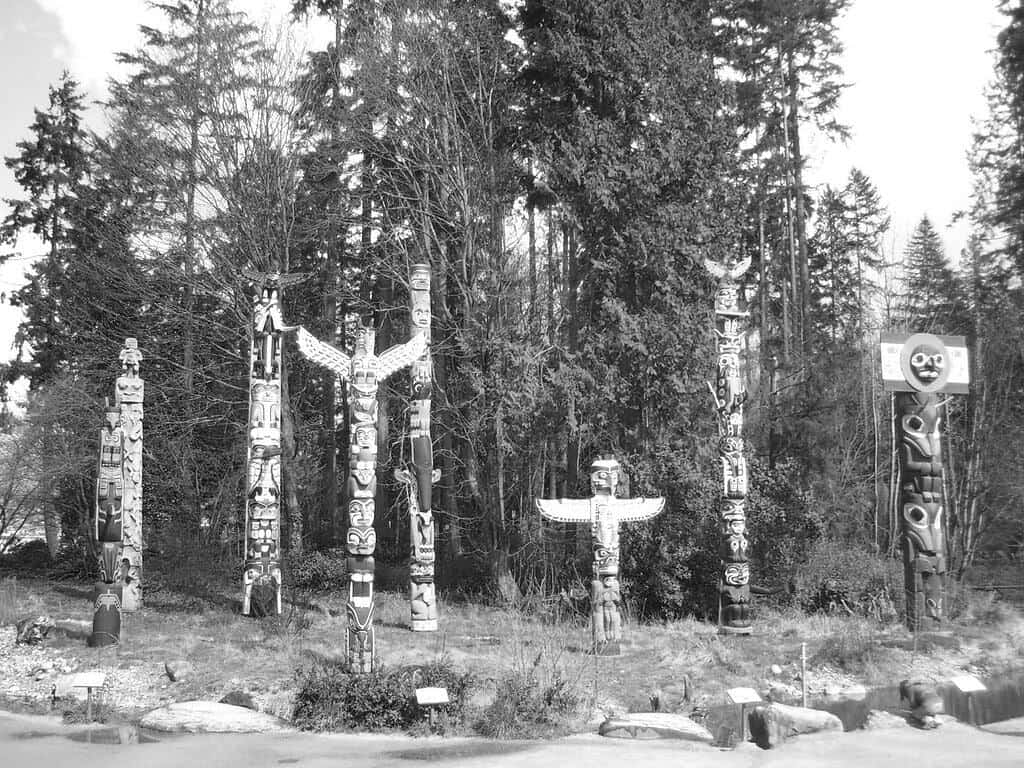
Totem poles are monuments that are built by First Nations of the Pacific Northwest. These poles represent ancestry, histories, people, or events and are erected to be visible within a community.
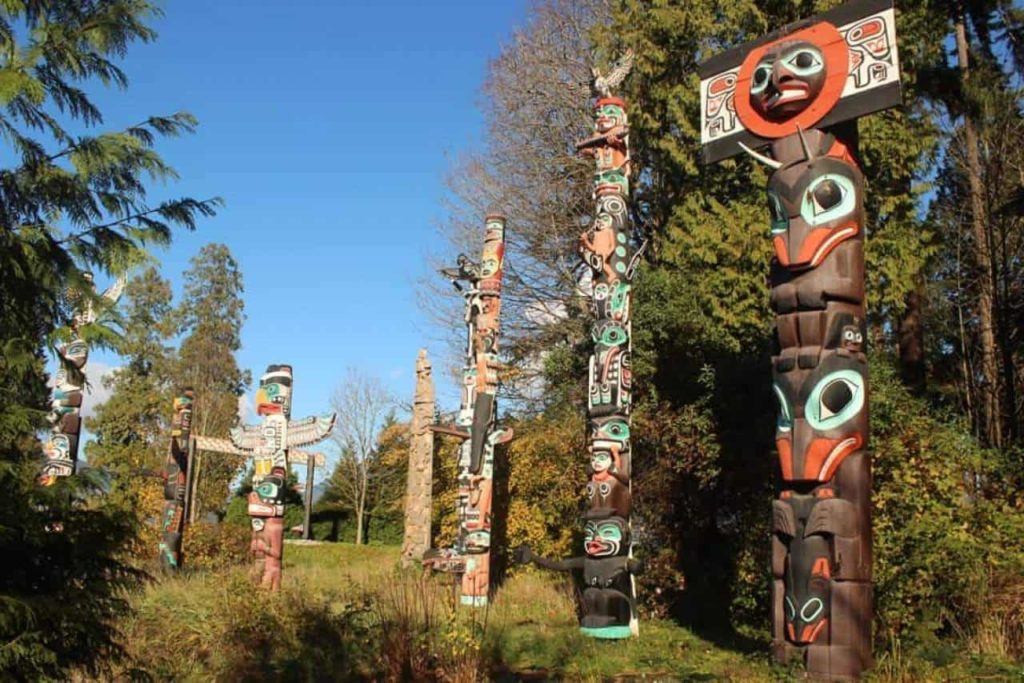
But what’s the big deal about these poles, you ask? Well, for starters, they’re considered signature symbols of Canadian identity.
This is because it signifies the country’s commitment to cultural diversity, reconciliation with Indigenous peoples, and recognition of their heritage, with each pole displaying different Indigenous artistry and traditions.
So in the early 20th century, the Vancouver Parks Boards started collecting these totem poles as they aimed to establish a replica of a First Nations Village in Stanley Park.
In 1924, the Park Board purchased four totem poles from Alert Bay, which were then erected near the arch.
More poles soon joined the collection from Haida Gwaii and Rivers Inlet. But here’s a little fun fact – the totem poles you see today are actually replicas and replacements of the original totems.
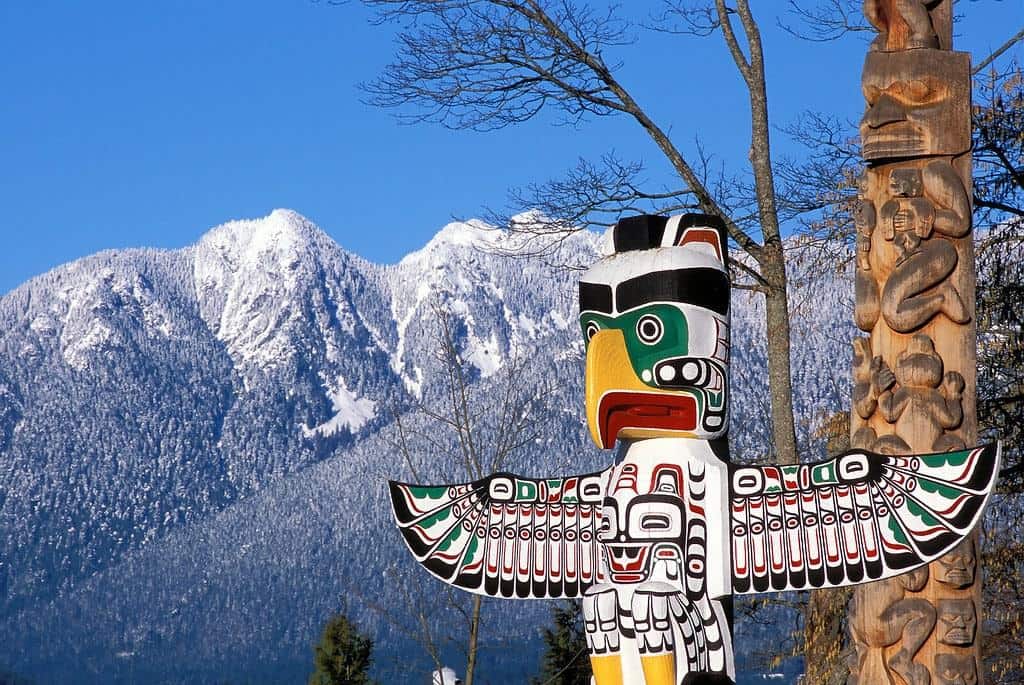
The original poles were sent to various museums for preservation or returned to their places of origin. So, while these poles may not be the originals, they still carry significant meaning as representations of the Indigenous peoples who created them.
These poles were carved by artists from various nations, including Squamish, Kwakwaka’wakw, Haida, Nisga’a, and Nuu-chah-nulth carvers. They serve as a reminder of the ongoing efforts to preserve Indigenous art and traditions.
How many totem poles are in Stanley Park?
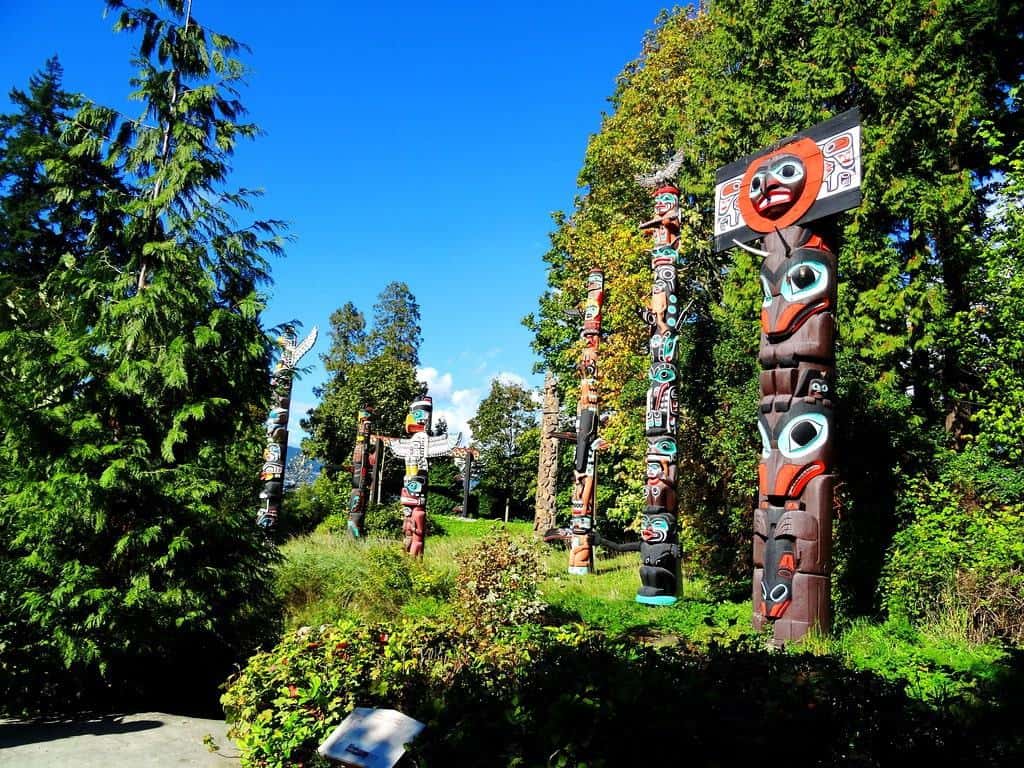
There are a total of nine totem poles erected at Stanley Park. They were constructed for over three years before being installed in 2008.
But it’s not just the number of poles that’s impressive – it’s the diversity of styles and carvings that really sets this collection apart.
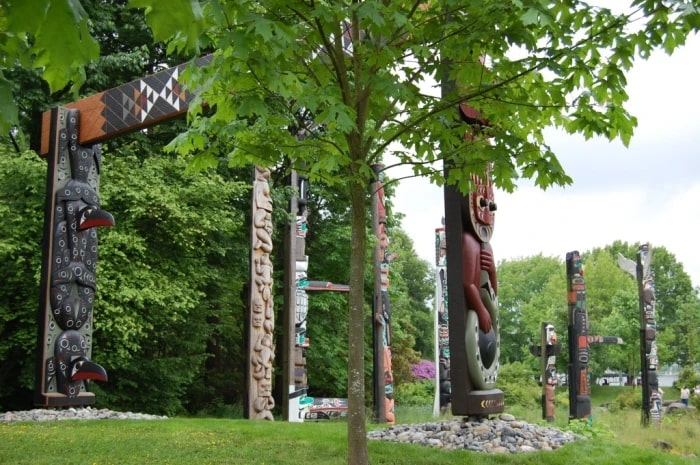
So the next time you find yourself strolling through the park, take a moment to appreciate these towering works of art and the legacy they represent.
The 9 Totem Poles in Stanley Park
1. Rose Cole Yelton Memorial Pole of the Squamish Nation

The Rose Cole Yelton Memorial Pole of the Squamish Nation in Stanley Park symbolizes the legacy and memory of Rose Cole Yelton, a respected member of the Squamish community.
She was the last surviving member of the Indigenous community that lived in the Brockton Point community. This pole is a classic beauty, and if you look up, you’ll see a thunderbird perched atop the pole with outstretched wings and a human face in the middle.
There’s also a raven, wold, and an orca whale being held by a wolf in remembrance of the ferry trips where the carver had seen orcas.
Rose’s son, Robert Yelton, guided the creation of the pole, with help from seven lead carvers: Vern Baker, Frank Burning, Deon Louie, and Guulaans Flewing; as well as Martin, Shane, and Nathan Sparrow.
2. Chief Skedans Mortuary Pole
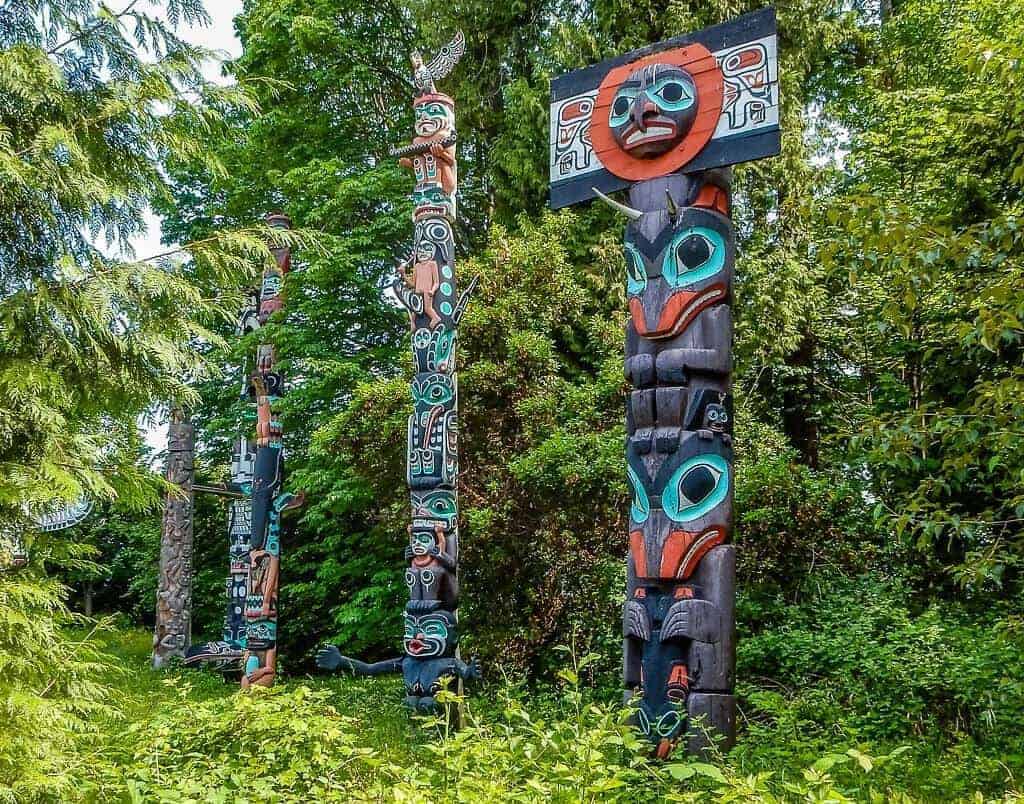
The Chief Skedans Mortuary Pole is probably the most striking of them all because of the large rectangular board surrounding the moon face on top.
Originally raised in the Haida village, this pole features a mountain goat, grizzly bear, and whale as these animals depict the chief’s hereditary crests.
If you look closely, the grizzly bear has small figures in its ears, which represents the chief’s daughter and son-in-law.
3. Ga’akstalas Totem Pole

Next up, we have the big guy of Stanley Park, the Ga’akstalas Totem Pole. It’s the tallest of the poles because of the bird sitting on top and it has the most characters than any other of the poles.
- On top we have a legendary bird called the Quolous.
- Below that is a Red Cedar-Bark Man who survived a great flood and gifted the first canoe to his people.
- Under that is the double-headed serpent Sisyutl along with Siwidi, the orca-riding hero.
- Then you’ll see a raven, followed by a grizzly bear holding a man’s head.
- On the bottom of the pole, we have the giantess Dzunukwa at the bottom of the pole. She was known for bringing magic and wealth to her people.
4. Thunderbird House Post
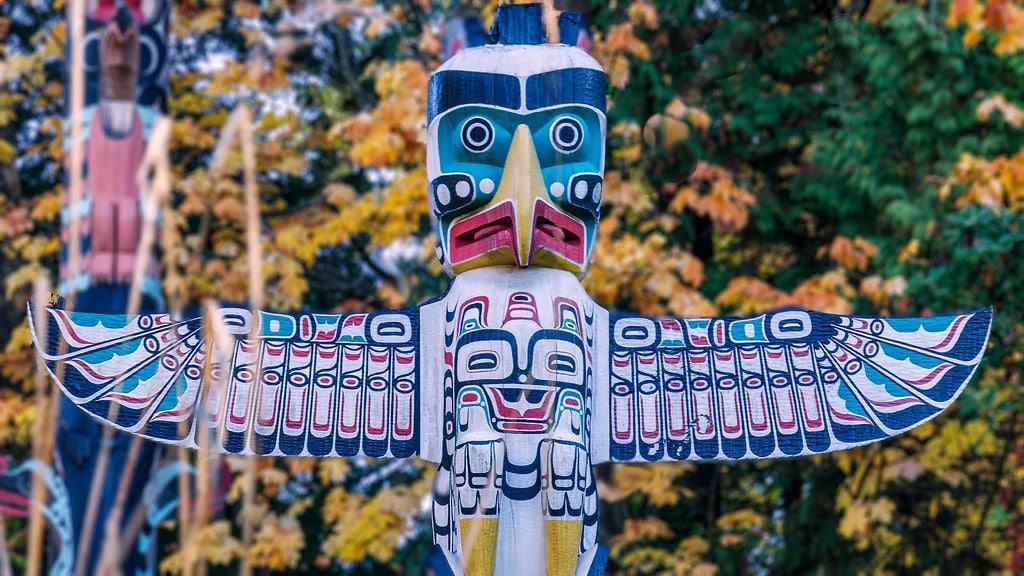
The Thunderbird House Post is a totem pole in Stanley Park that was created by Tony Hunt in 1987. It’s actually a replica of a house post that was originally carved by Kwakwaka’wakw artist Charlie James in the early 1900s.
The Thunderbird House Post is the smallest, but it’s no slouch in terms of design. It has two depictions: a thunderbird on top and a grizzly bear with large teeth wrapping its arms around a human.
5. Sky Chief Pole
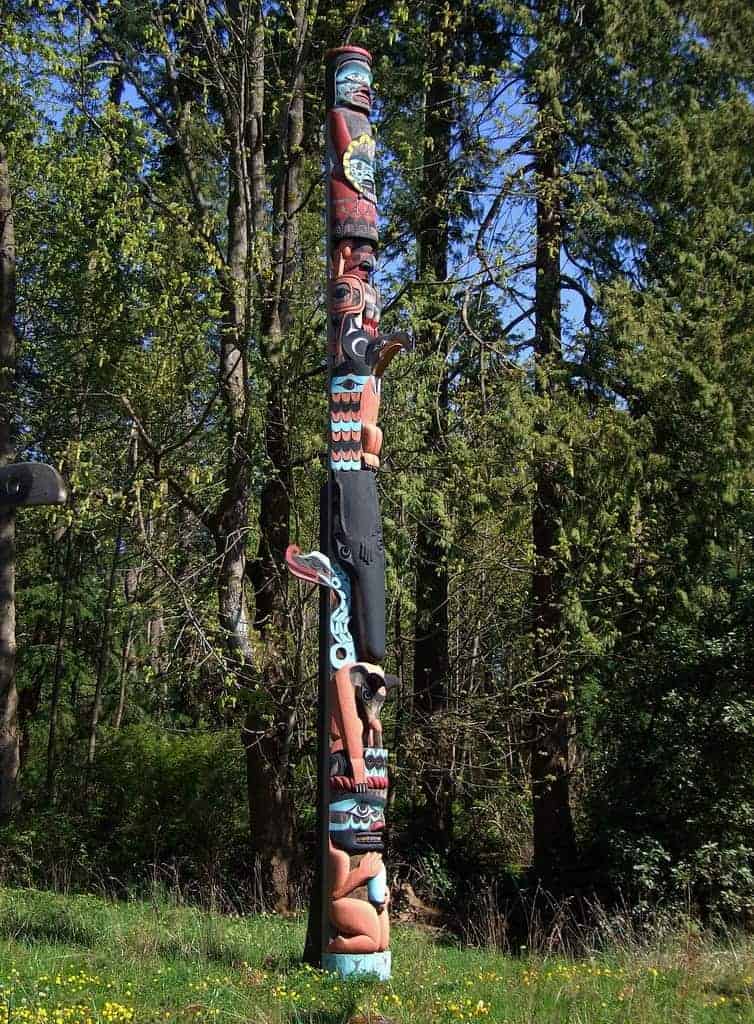
Alright, let’s talk about the Sky Chief Pole. This pole has brown and blue characters that represent the history of the Nuu-chah-nulth.
Carved by two talented First Nations artists, Tim Paul and Art Thompson, this pole is a true masterpiece of Nuu-chah-nulth history. They explained that this pole is dedicated to acknowledge the arts and ceremonies of our grandparents’ generation.
At the top of the pole, Sky Chief is depicted holding a moon. Below him, there are several other figures, including a small little bird, thunderbird, whale with a lightning-snake, wolf, and a Man of Knowledge holding a treasure.
6. Kakaso’ Las Totem Pole
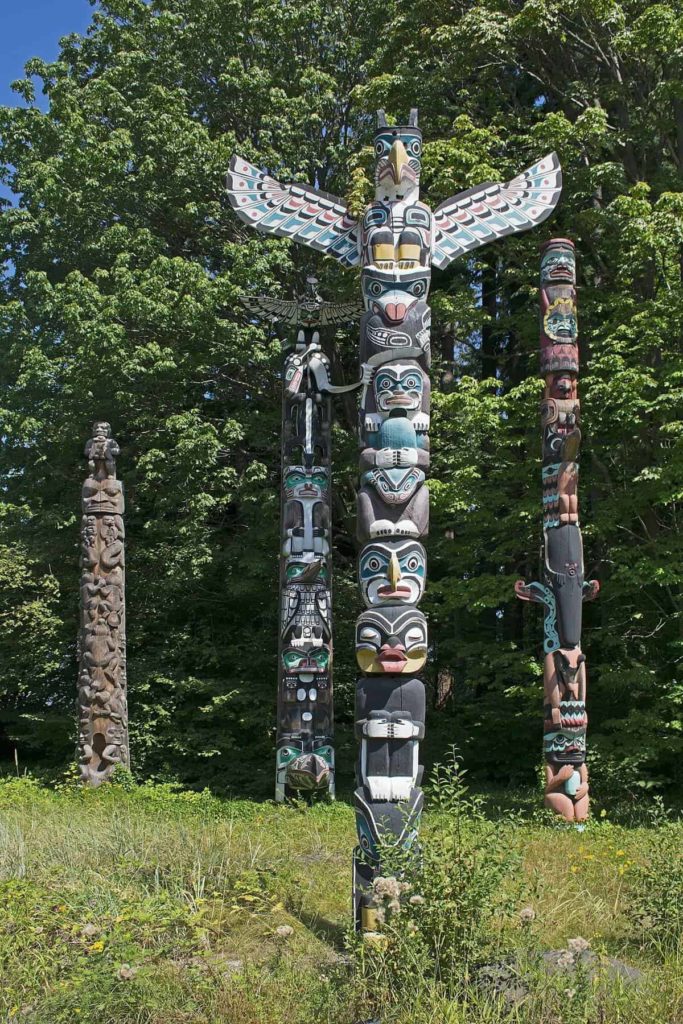
The Kakaso’ Las Totem Pole, one of the most striking poles in Stanley Park. It was carved in 1955 by Kwakwaka’wakw carver Ellen Neel and her uncle, Mungo Martin.
When you see this pole, you can’t help but notice the big-eyed thunderbird on top, and the vibrant green and yellow paint that covers the wood.
Aside from the thunderbird, the pole features other significant figures like the sea bear clutching an orca, a human man holding a frog, and a face with a bright blue-green color and a large yellow nose.
All of these carvings represent family crests and stories. You’ll also see the giantess Dzunukwa sitting with her hands holding her knees and her lips open, and at the bottom sits the raven.
7. Chief Wakas Totem Pole
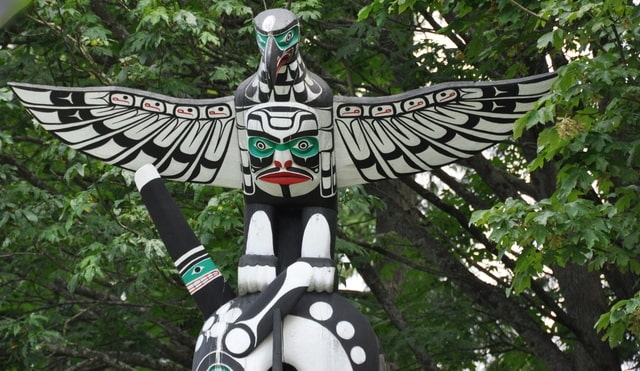
The Chief Wakas Totem Pole made a strong impression on us because it utilizes black and white colors. This stunning pole is a replica carved by Nimpkish artist Doug Cranmer in 1987.
The black and white design is accented with pops of vibrant green and red, making it a true standout amongst the other totem poles in Stanley Park. And let’s not forget the magnificent thunderbird perched atop the pole.
Moving further down the pole, you’ll encounter an array of other intriguing figures. This includes the orca, the wolf, the “Wise One,” and the bear, which symbolizes the transitional link between land and sea.
And let’s not forget about the huxwhukw, a mythical raven with a huge beak and feathers that represents one of the supernatural associates of Baxwbakwalanuksiwe’, the cannibal spirit.
8. Oscar Maltipi Pole
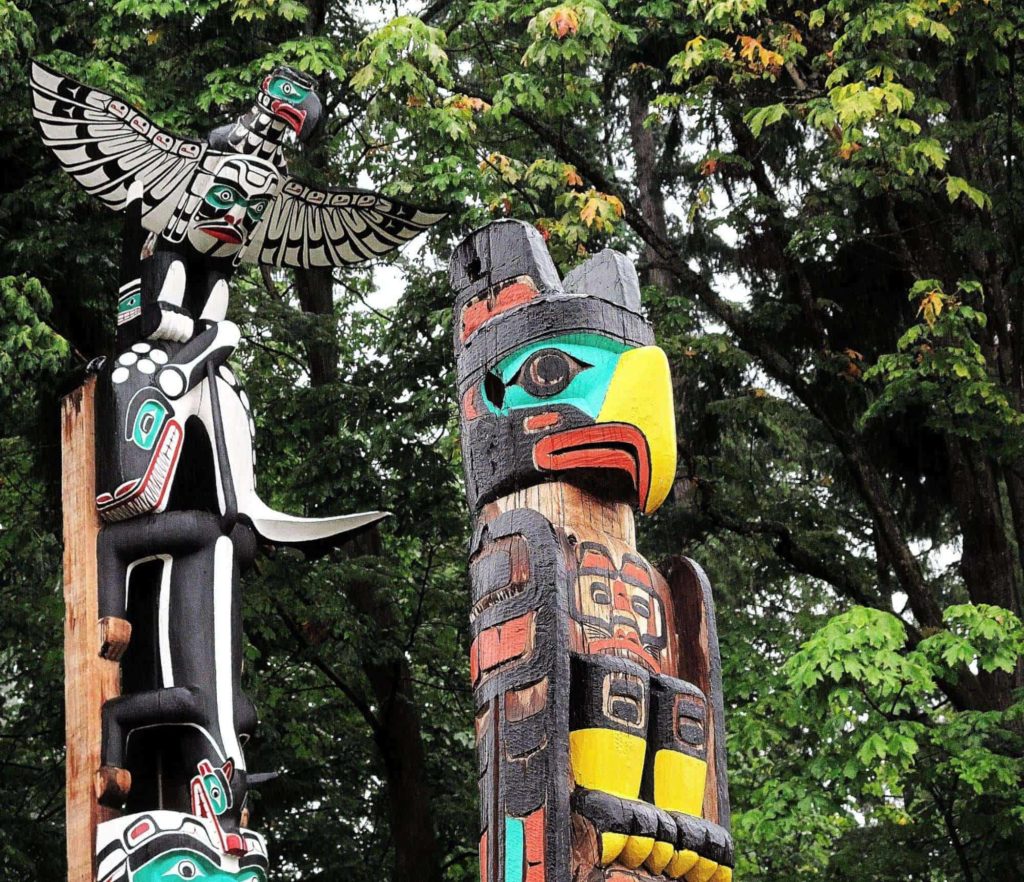
The Oscar Maltipi Pole has been standing tall in Stanley Park for quite some time now. It was carved by a talented Kwakwaka’wakw artist named Oscar Maltipi.
You know you’re in the presence of a true artist when they have the same name as their creation, right? So, just like the Thunderbird House Post, it only features two creatures: the thunderbird and the orca whale.
But what’s different with this pole is the wings of the thunderbird is actually down rather than outstretched, and the orca is pointing face down, almost as if it’s diving into the depths of the ocean.
These figures highlight the origin stories of the First Nations where they tell of animals and supernatural beings who helped them find their family lineages.
9. Beaver Crest Pole
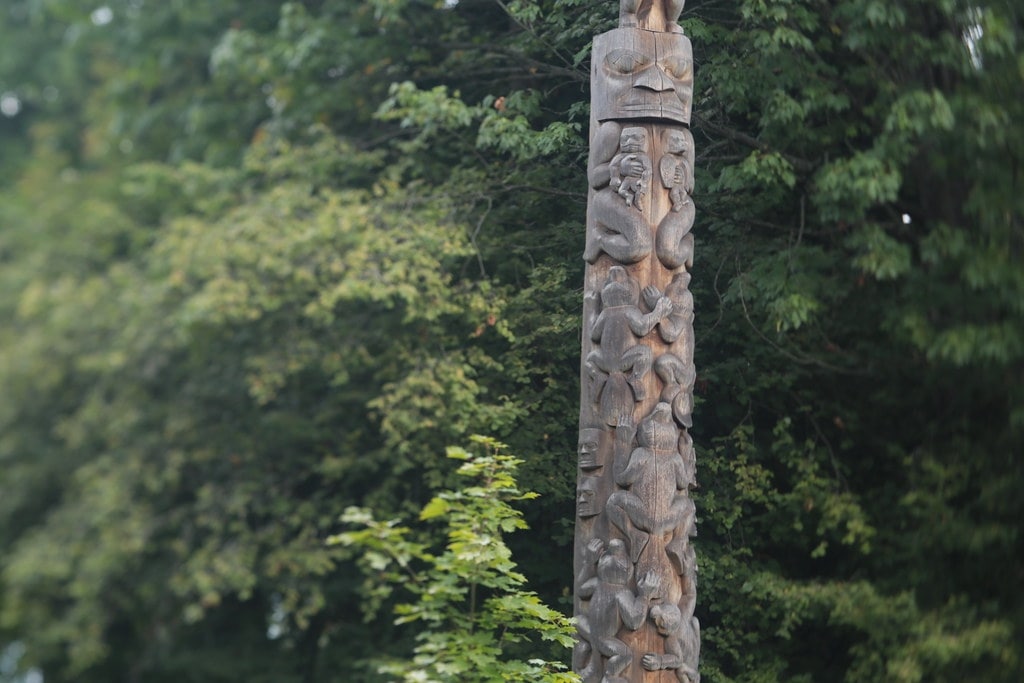
The Beaver Crest Pole may not be flashy with paint, but it’s definitely not lacking in intricate carvings. The pole is covered in detailed human faces and small critters, which makes it a unique and interesting piece to see.
The story behind this pole is fascinating, as it tells of a young man who helped the beavers escape and witnessed their transformation into humans, revealing the death and destruction of their chief.
This inspired the Tait family’s Eagle clan to choose the beaver as its crest, and they celebrated with a feast and the raising of the Big Beaver pole.
Carved in 1987 by Nisga’a artist Norman Tait, his son Isaac, brother Robert, and nephew Ron Telek, the Beaver Crest Pole is a symbol of an important moment in the history of the Tait family and their clan.
Where are the totem poles in Stanley Park located?
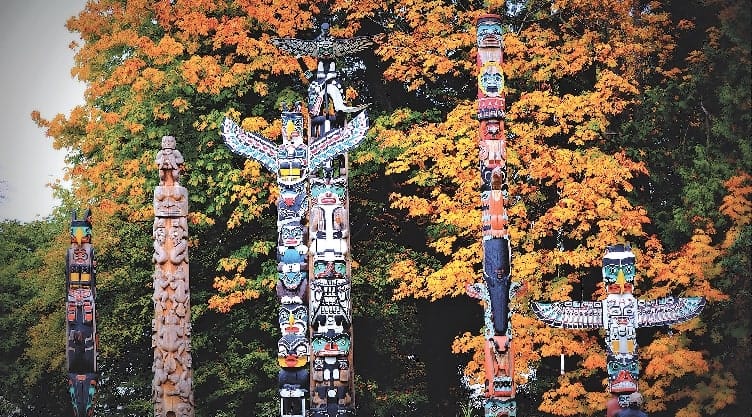
The totem poles in Stanley Park are located at Brockton Point. So to get here, you will need to locate the Vancouver Rowing Club, and from there, you continue along the seawall until you see a wooden gateway on your left. It looks like this.
Keep an eye out for this gateway, and you’ll be sure to find your way to the fascinating and historic totem poles in no time!
And that, my friends, is the story of the totem poles in Stanley Park! Standing tall and proud against the backdrop of the park, they are a testament to the rich history and culture of the First Nations people who call this land home.
If you want to get to know Stanley Park better, check out these articles:







